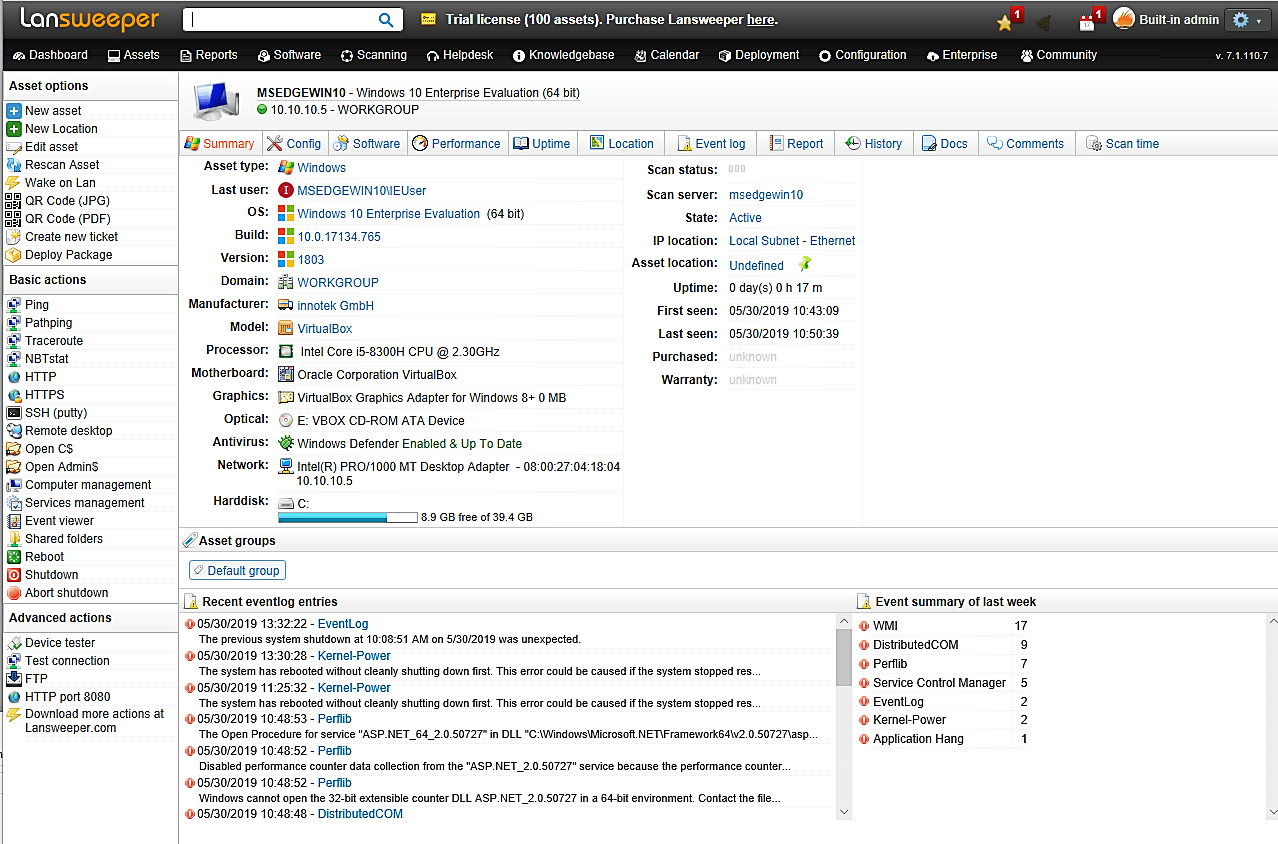Lansweeper - Network inventory and resource management
Lansweeper is an adaptable and flexible network inventory and resource management programming that conveys rich highlights and capacities to a broad scope of organizations. The product allows the automatic discovery of all Windows, Linux, and Mac machines on a system through the guide of its operator-free system filtering abilities. It likewise empowers clients to track the applications they installed on their PCs and determine if they have licenses for every one of them.
Besides, Lansweeper gives IT experts a chance to sort out the entirety of help desk communications just as their IT resources in one exceptionally adaptable and single sign-on web console, helping them in expanding specialist efficiency and improving client experience. The product accompanies information base administration highlights which permit the formation of self-improvement articles and assets that are anything but difficult to look at. To improve consistency with organization approaches, Lansweeper can give point-by-point reports that help administrators in getting bits of knowledge into the compliance status of their system.
Lansweeper furnished with implicit application advancement instruments that empower clients to consequently disseminate, install, uninstall, and update programming applications on groups of assets or a particular resource. As they convey applications, the product grants them to resolve non-compliance issues quickly.
The network inventory and resource management programming has Active Directory management that can be utilized for capturing detailed data about the PCs on a system and joining it with client information from Active Directory. With Lansweeper, IT experts and System Administrators can gather detailed information about their system gadgets, for example, printers, switches, and routers utilizing its SNMP system scanning abilities.
For more information about this tool, visit the “https://www.lansweeper.com” webpage.
Let’s perform a network scanning using Lansweeper. For this, start the tool, then provide the IP range on the main page and click the “Next” button.

Select asset types that you have in your network then click “Next.”

If you know any Windows credentials, provide them in the field below and continue by pressing the “Next” button.

Once you provided everything, the Lansweeper will begin to scan the network and gather all possible information regarding network assets. All collected data will be displayed under the “Main Page” tab. Lansweeper can give fast outlines of all computers and gadgets on a system. It can, in a split second, arrange and sort these PCs and machines into various classifications, for example, gadget type, domain, model, working framework, and organizational unit so users can rapidly get to the data they need. They can likewise make their classifications to tweak how they sort their machines when they conduct IT asset inventory.

One of the critical highlights offered by Lansweeper is its capacity to direct PC and network inventory without the requirement for deploying agents on the machines. In this way, clients will almost certainly make plans for scanning PCs on their network, as indicated by IP ranges and necessary servers. At that point, the product consequently scans such PCs and creates itemized scanned data about them. This information includes details on software, hardware, event logs, Windows updates, and product keys.

The network inventory and asset management software assures that IT professionals and Network Administrators perform software licensing and inventory auditing with ease. This tool enables them to immediately gather detailed information and reports about the applications and programs that are frequently installed on their computers. It also distinguishes the different versions of apps and software packages. If there are software packages that are unknown to them, Lansweeper helps quickly identify such packages.

Lansweeper can also create intuitive reports that provide beneficial information for administrators and security analysts. For instance, let’s create a report related to user access and roles with teams. Click on the “Reports” tab and select the “Helpdesk: User Access & Roles with teams” option.

It will create a report displaying all available usernames, email addresses, roles, phone numbers, domain names, licenses, and many more.

To wrap it up, Lansweeper conveys coordinated learning base management abilities that help associations and their IT groups in making information base articles and content so they can streamline their procedures, empowering representatives to rapidly get to the data they need and customers to determine issues on their own. As administrators troubleshoot issues, these fixes can be documented together with the workarounds that are required to solve those issues. Users can likewise control how employees and clients get to data and content from their insight base. They can allow and confine access dependent on user roles.
